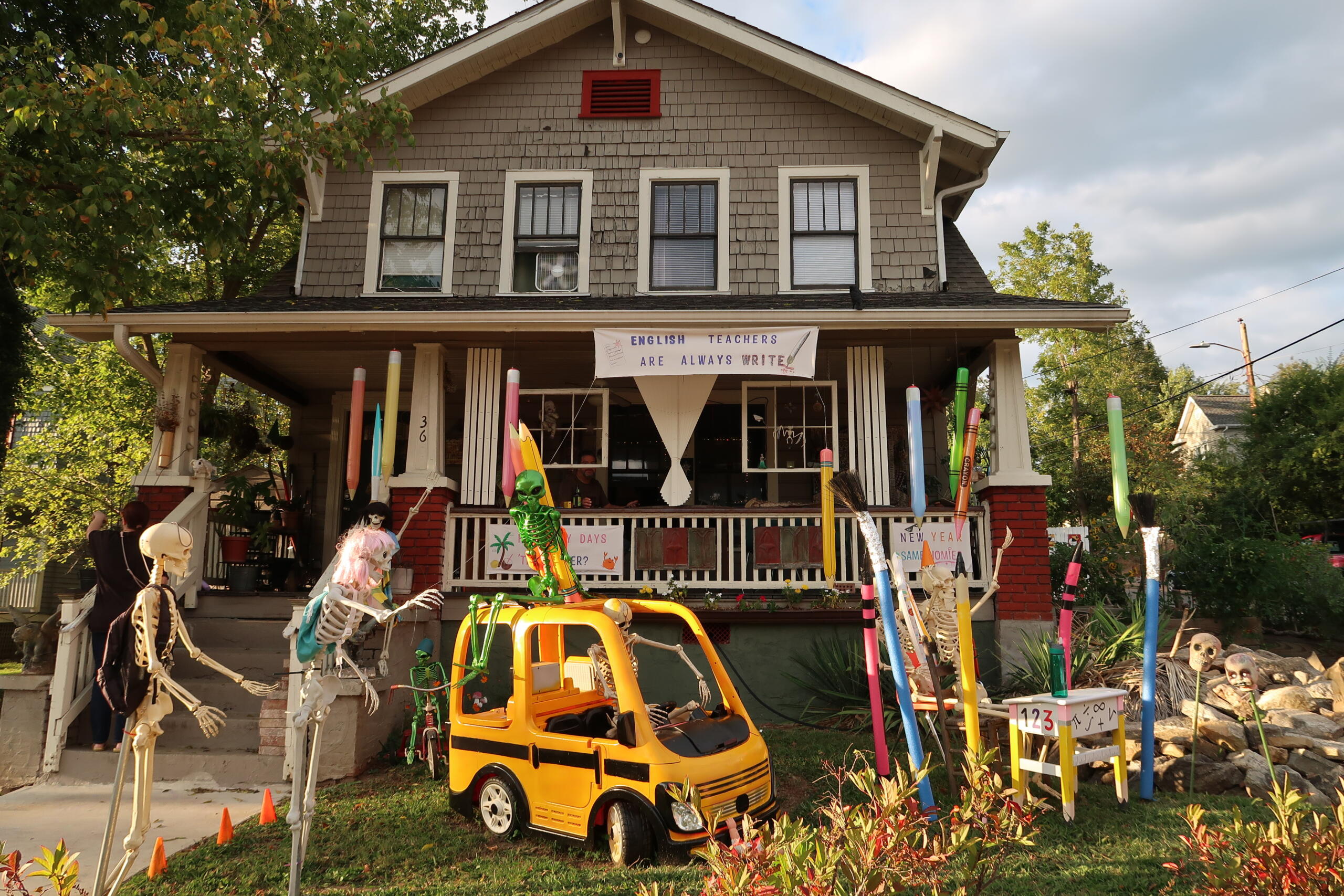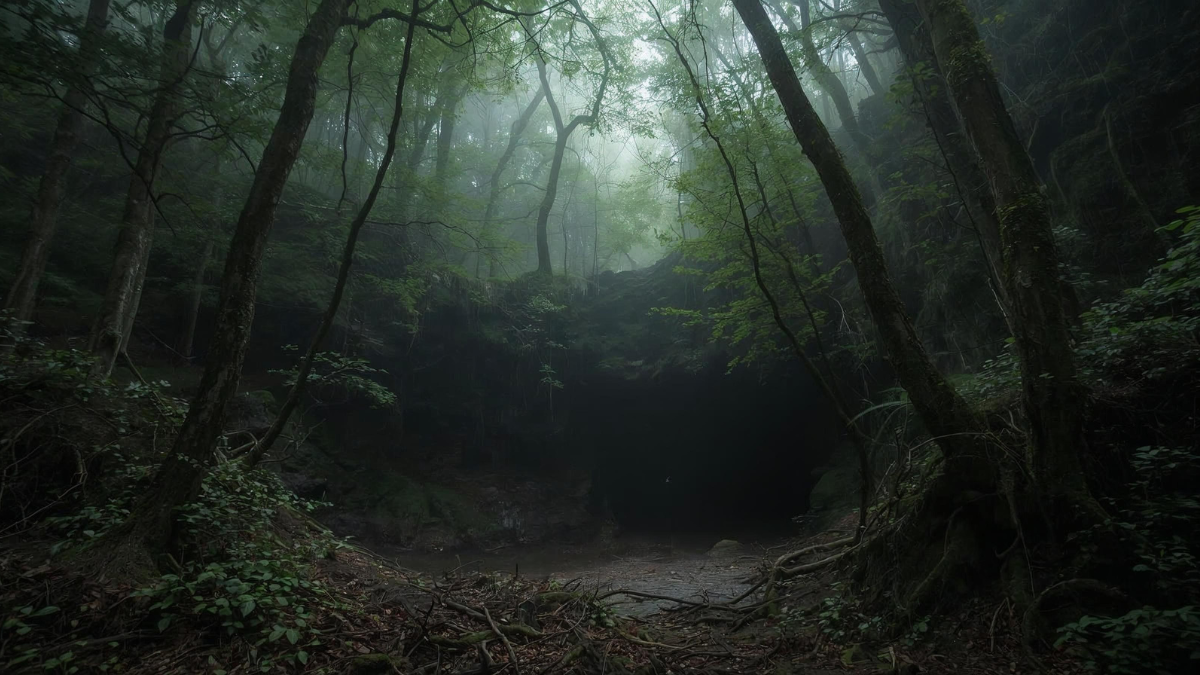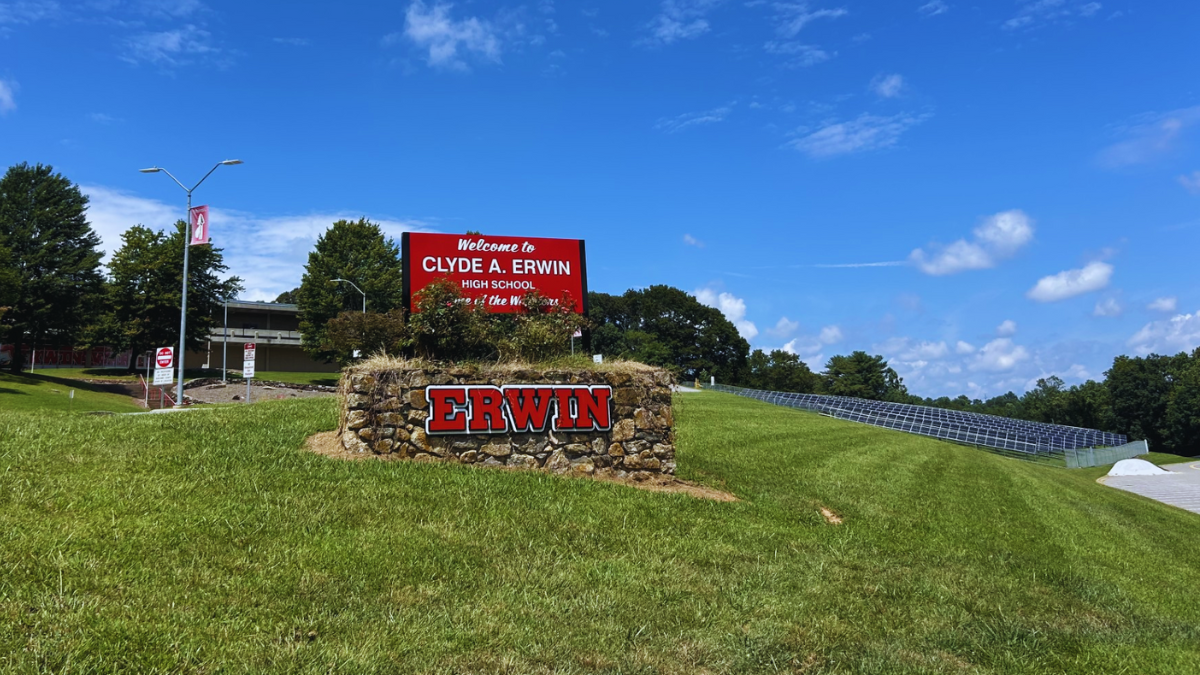EDITOR’S NOTE: Strangeville explores the legends, folklore, and unexplained history of Western North Carolina. From Cherokee mythology and Appalachian ghost stories to Bigfoot sightings and UFO encounters, the Blue Ridge Mountains have long been a hotspot for the strange and mysterious. Join us as we dig into the past and uncover the truth behind the region’s most curious tales.
ASHEVILLE, N.C. — Tucked away in downtown Asheville, Chicken Alley draws foot traffic and whispers. Local lore points to strange sightings and a ghost said to pace the alley, cane tapping, searching for something lost in time. Chicken Alley is one of the most talked-about haunted spots in the city. Whether the legend holds any truth is still up for debate.
The ghost said to haunt Chicken Alley is known as Dr. Jamie Smith, a physician reportedly killed in a bar brawl at Broadway’s Tavern in the early 1900s. Stories describe him in a long duster coat and wide-brimmed hat, carrying a silver-tipped cane and medicine bag. His apparition is said to appear late at night, accompanied by the sound of tapping footsteps echoing down the alley.
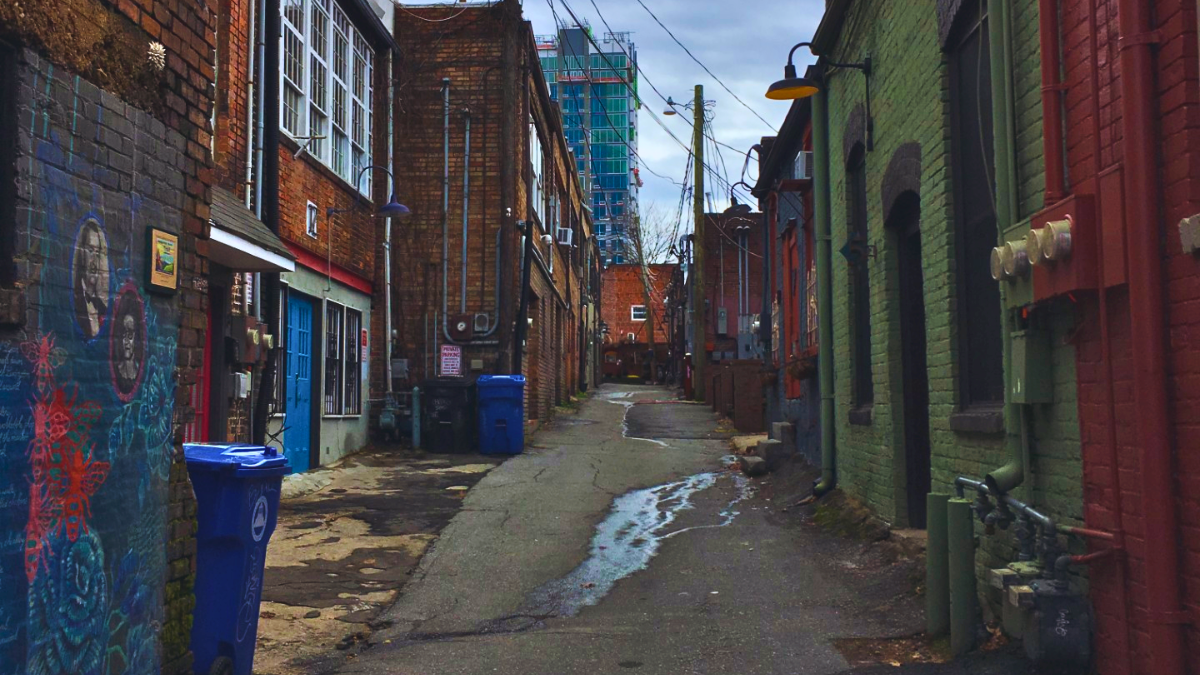
Those who have walked the alley after dark claim to have seen his figure, shadowy and silent, drifting past the mural that stretches across one of the walls. Others have heard voices, smelled smoke, or felt a cold rush of air without explanation. These reports have made Chicken Alley a mainstay on ghost tours and local folklore retellings.
There is just one problem. None of it can be verified.
Newspaper archives and historical records yield no mention of a Dr. Jamie Smith killed in Asheville. No obituary, news brief, or crime report tied to a murder in Chicken Alley.
A 1904 newspaper clipping does reference a James M. Smith, a tavern owner operating in the area. Some speculate this may be the real person behind the legend, whose identity was reshaped by time and storytelling. The details changed. Smith became a doctor. A knife fight became the origin of a ghost story that has lasted more than a century.
Whether or not a murder occurred, Chicken Alley has become its own kind of character in the story of Asheville. The narrow brick corridor off Woodfin Street earned its name from the days when poultry ran loose among backyard coops. Today, the chickens are gone, but the alley is far from forgotten. At its entrance stands a large mural.
The mural that stretches across the alley’s brick wall was completed in 2011 by local artist Molly Must. It features a towering rooster and a young woman holding a jar of honey with a black snake curled at her feet. That woman is Sandra Gudger, granddaughter of Sam and Argie Young, who once ran a chicken-processing plant on this alley.
The mural is a tribute to that family business and the area’s rich agricultural heritage, once home to farm supply shops and a downtown farmers market. Sandra provided family photos and stories that helped shape the mural and even collaborated with Must on a poem that now lives on the wall alongside the image.
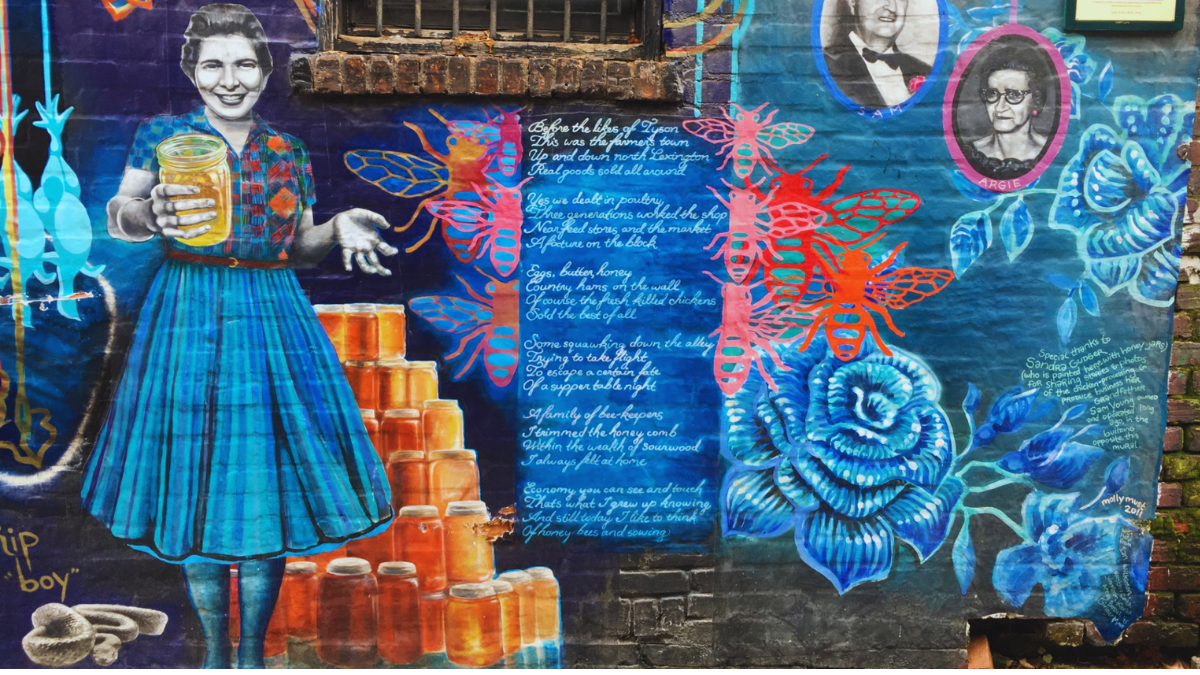
The mural has become a landmark, drawing in curious visitors to the alley where they may be in the presence of something haunted.
Residents who have lived on or near the alley remain split. Some dismiss the stories entirely. Others say they have felt something they cannot explain. One longtime neighbor recalled hearing the sound of a cane tapping the bricks outside their window when no one was there. Another swore they saw a man in a coat vanish into the dark just beyond the light of a streetlamp. These are the kind of accounts that keep a story alive.
Whether the ghost is real or the invention of collective memory, Chicken Alley has found its place in Asheville’s folklore. In a city that often embraces the strange and the mysterious, it is the kind of place that invites belief. Or at least curiosity. Fact or fiction, the story of Chicken Alley remains one of Asheville’s most enduring and peculiar legends.
[wpgmza id=”52″]


